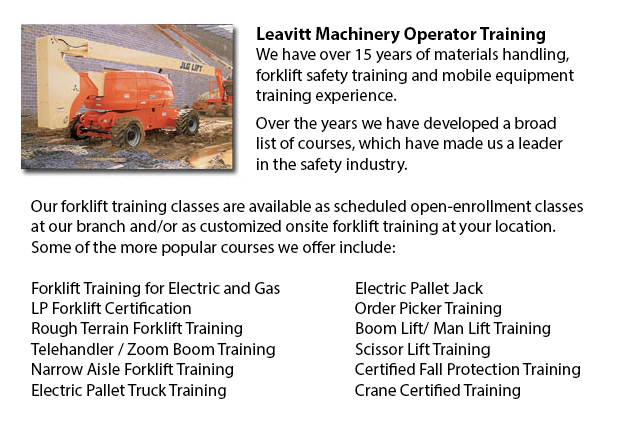
St Catharines Aerial Lift Certification - Aerial Lift Certification is for personnel who need a thorough knowledge of aerial lift safety. Supervisors, maintenance workers and construction craftsmen require this training to ensure that inspectors and operators are qualified. Federal, provincial and state regulations require companies to be certified in order to do in-house aerial lift inspections.
Regardless of differences in the type of work being done, all workers who perform tasks at elevated levels normally make use of the same means to access the needed height. Aerial lifts and scissor lifts are the mechanized machines utilized to lift employees and equipment to elevated places.
Bucket trucks referred to as Cherry Pickers are aerial platforms which feature a supported boom and bucket. The main hazard to making use of this kind of platform is normally tip-overs, falls and electrocutions. Certification makes certain that workers who make use of aerial lifts are correctly trained to safely operate the machine. Training likewise guarantees that workers know how to maintain aerial work platforms in accordance with the directions of the manufacturer.
Training covers the following lifts: Aerial lifts that are mounted to vehicles, Boom-supported scissor lifts and aerial lifts. Trainees would gain knowledge of the causes and results of aerial lift accidents, and would learn safe operating procedures. They will be technically competent in the various kinds of aerial lifts, as well as terminology and parts. From selecting the best aerial lift for the job to interpreting rated capacity charts, the certification program would provide employees with all that they need to know to carry out their work safely.
Those who are assigned the task of checking aerial lift devices must know how to inspect booms, gears, operating mechanisms, structural parts, control systems and functions, power plants, braking systems, attachments, pins and shafts, electric and pneumatic components, hydraulic, emergency safety devices and operator aids, et cetera. Training will include the following: the role of the inspector in reducing accidents and liability exposure; monthly and annual check; how to perform a pre-use; how to apply and interpret regulations about aerial lift safety standards; how to write inspection reports; techniques and checklists; inspection procedures; understanding and applying the three levels of aerial lift inspection; following record keeping requirements; and when to remove defective aerial lifts from service.
-
St Catharines Heavy Equipment Training Schools
St Catharines Heavy Equipment Training Schools - When selecting an operator training course, there are a lot of heavy equipment training schools to choose from. To be able to ascertain the qualifications you will attain, it is very important to explo... More -
St Catharines Heavy Equipment Operator Training
St Catharines Heavy Equipment Operator Training - Heavy equipment operator training facilities that offer quality standards within the business, offering field performance work and additional machine training are really sought after training features... More -
St Catharines Forklift Training Programs
St Catharines Forklift Training Programs - Are you looking for work as a driver of a forklift? Our regulatory-compliant mobile equipment operator training offers instruction in kinds of forklifts, pre-shift check, fuel kinds and handling of fuels, an... More -
St Catharines Heavy Equipment License
St Catharines Heavy Equipment License - A heavy equipment license can be obtained by taking a certification and preparation course at a private training school or a vocational school. This license would qualify you to operate various types of heavy e... More -
St Catharines Overhead Crane Safety Training
St Catharines Overhead Crane Safety Training - Overhead crane safety training equips operators with skills and knowledge regarding crane safety precautions, accident avoidance, materials handling, and equipment and stock protection. Trainees will lea... More -
St Catharines Scissor Lift Training
St Catharines Scissor Lift Training - Scissor lifts should be operated proficiently to be able to protect the safety of the equipment and the wellbeing of others within the workplace. Operators who are skilled are trained to drive the specific type o... More -
St Catharines Telescopic Training
St Catharines Telescopic Training - Telescopic Handlers are a kind of forklift, normally known as telehandlers. This machine has been increasing in popularity due to its greater lift heights and its versatility. It is often preferred over the convent... More -
St Catharines Boom Lift Certification
St Catharines Boom Lift Certification - Utilizing elevated work platforms allow for maintenance operations and work to be carried out at elevated work heights which were otherwise unreachable. Boom Lift Certification Training educates workers about t... More

Forklift Certification St Catharines
TOLL FREE: 1-888-254-6157
St Catharines, Ontario
forkliftcertificationstcatharines.com/
Email Us
About Us


